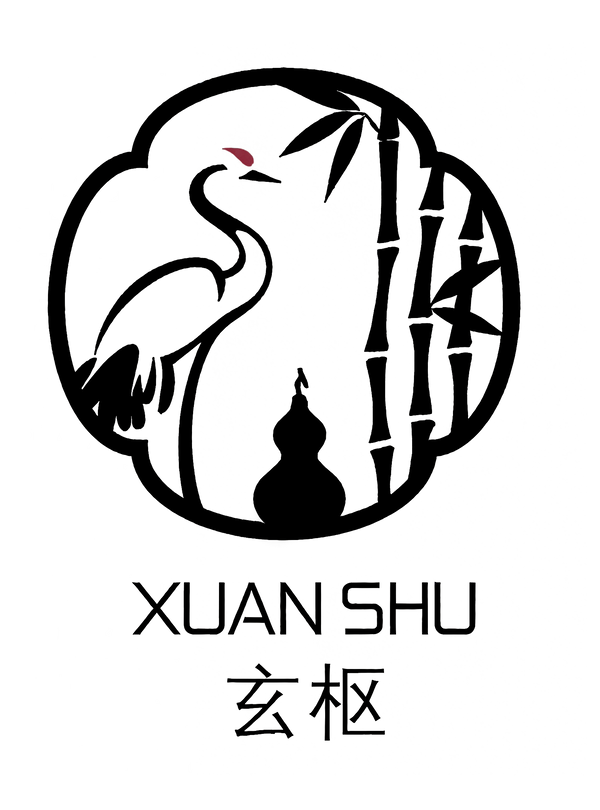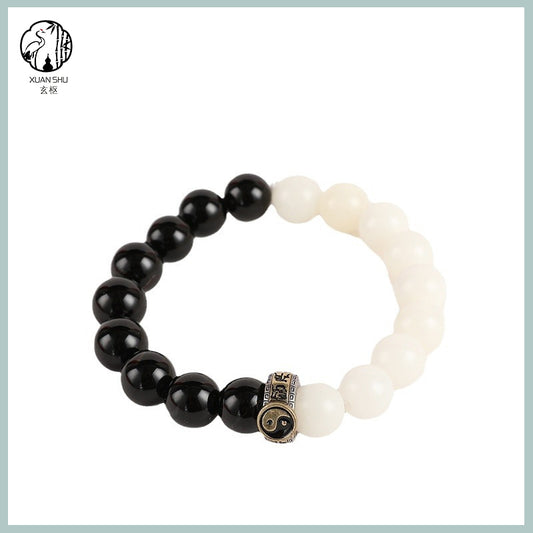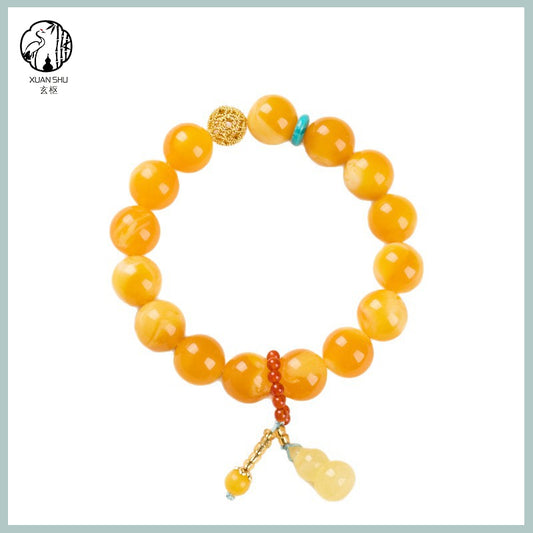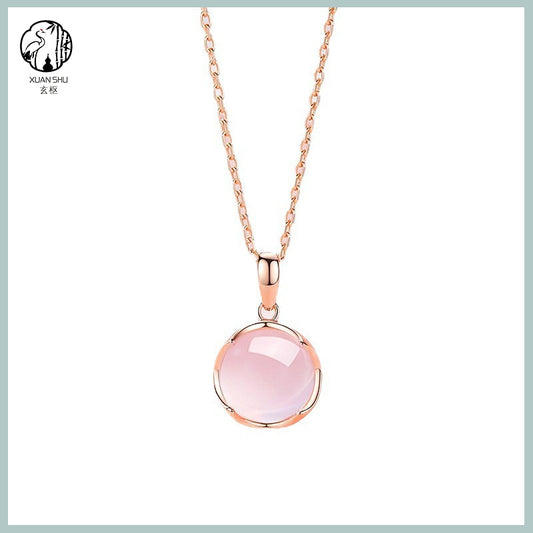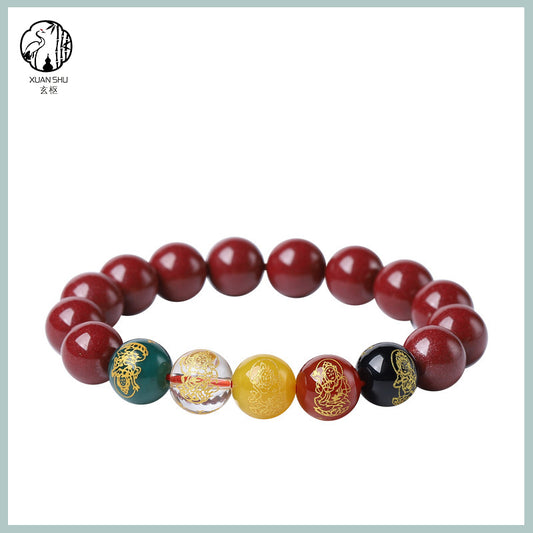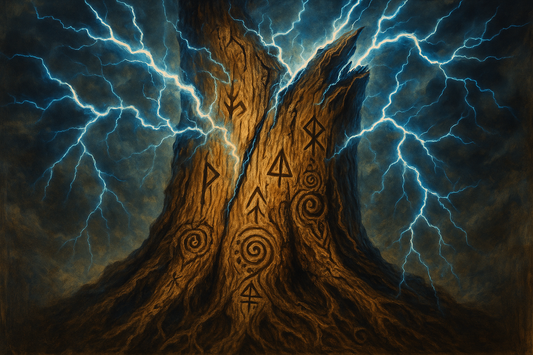What Is The Five Elements Theory?
In the Taoist philosophical system, the Five Elements—Metal, Wood, Water, Fire, and Earth—form a profound model for understanding the universe. They are not only seen as the fundamental components of all things, but also embody the mysterious laws governing cosmic operation. This unique view of the Five Elements goes beyond mere material classification; through the dynamic interplay of generation and restraint, it constructs a comprehensive framework for interpreting nature, the human body, and even the realm of deities. As such, it serves as a core theoretical foundation that underpins Taoist cultivation, ritual practices, and cosmology.
Basic Concepts of the Five Elements
Metal (金):
Represents hardness, sharpness, and contraction. It symbolizes autumn, the west, and the color white. In the human body, Metal corresponds to the lungs and large intestine.
Wood (木):
Represents growth, expansion, and smooth development. It symbolizes spring, the east, and the color green or blue-green. In the human body, Wood corresponds to the liver and gallbladder.
Water (水):
Represents fluidity, nourishment, and downward movement. It symbolizes winter, the north, and the color black. In the human body, Water corresponds to the kidneys and bladder.
Fire (火):
Represents heat, brightness, and upward movement. It symbolizes summer, the south, and the color red. In the human body, Fire corresponds to the heart and small intestine.
Earth (土):
Represents support, transformation, and nurturing. It symbolizes late summer (the transitional period between summer and autumn), the center, and the color yellow. In the human body, Earth corresponds to the spleen and stomach.

Interrelationships of the Five Elements
In Taoism, the Five Elements are interconnected through cycles of generation (mutual promotion) and control (mutual restraint). These relationships form the basis of a dynamic balance that governs all things in the universe.
Generating Cycle (Shēng 生):
- Metal generates Water (metal, when melted, can produce liquid).
- Water generates Wood (water nourishes trees and plants).
- Wood generates Fire (wood fuels fire through combustion).
- Fire generates Earth (fire leaves behind ash, which becomes part of the earth).
- Earth generates Metal (metal ores are formed within the earth).
Controlling Cycle (Kè 克):
- Metal controls Wood (metal tools can cut down trees).
- Wood controls Earth (roots of trees penetrate and break up the soil).
- Earth controls Water (soil can absorb and contain water).
- Water controls Fire (water extinguishes flames).
- Fire controls Metal (fire can melt metal).
These dynamic interactions explain natural processes, health imbalances, and spiritual harmonies within the Taoist worldview.
Applications of the Five Elements in Taoism
Divination and Prediction:
Taoist practitioners often use the theory of the Five Elements to divine auspiciousness and predict future events. By observing celestial phenomena, geographical conditions, and human affairs, and analyzing them through the generating and controlling relationships among the Five Elements, they can infer trends and outcomes.
Feng Shui:
In Taoist Feng Shui, the Five Elements are widely applied in site selection, architectural layout, and interior decoration. By balancing the elemental forces, one can create a harmonious and auspicious living environment.
Health Preservation and Cultivation:
Taoist health practices and spiritual cultivation often draw upon Five Element theory. By adjusting breathing, diet, and physical movement, practitioners aim to harmonize the elements within the body, thereby strengthening health and prolonging life.
Taoist Rituals and Talismans:
The Five Elements also play a crucial role in Taoist rituals and talismanic practices. Taoist priests invoke the power of the elements through drawing talismans, chanting incantations, and performing rituals to dispel evil, ward off harm, and invite blessings.
History of the Five Elements
The theory of the Five Elements—Metal, Wood, Water, Fire, and Earth—has a long and profound history. Its conceptual framework took shape during the pre-Qin period and continued to evolve over time, exerting a lasting influence on traditional Chinese culture. The development of the Five Elements theory can be traced through the following key stages:
1. Origins and Early Records
The concept of the Five Elements can be traced back to the Book of Documents (Shangshu·Hongfan), which states:
"The Five Elements: the first is Water, the second is Fire, the third is Wood, the fourth is Metal, and the fifth is Earth. Water moistens and flows downward; Fire blazes upward; Wood bends and straightens; Metal conforms and transforms; Earth is used for cultivation."
This indicates that the Five Elements were originally a summary of five fundamental substances in nature, each endowed with distinct properties and functions. Additionally, the Discourses of the States (Guoyu·Zhengyu) notes,
"By combining Earth with Metal, Wood, Water, and Fire, all things are formed,"
further clarifying the relationship between the Five Elements and the material world.
2. Development during the Spring and Autumn and Warring States Periods
During this time, the Five Elements theory began to merge with philosophical thought. Although Confucius did not directly reference the Five Elements, his teachings implicitly reflect the ideas of mutual generation and restraint.
Mozi emphasized:
"To honor the Five Elements is to give life; to go against them is to bring harm,"
advocating harmony with the elemental laws to achieve social order.
Most notably, Zou Yan of the Warring States period introduced the Theory of the Five Virtues and Dynastic Cycles (Wude Zhongshi), linking the rise and fall of dynasties to the dominance of a particular element. This idea deeply influenced subsequent dynastic ideology and historiography.
3. Systematization during the Qin and Han Dynasties
On the eve of Qin unification, the Lüshi Chunqiu (Master Lü’s Spring and Autumn Annals) incorporated the Five Elements into rituals and governance, creating a “universal classification system” that reflected the Taoist concept of harmony between Heaven and humanity (tian ren he yi).
In the Western Han Dynasty, philosopher Dong Zhongshu refined and systematized the Five Elements theory. He developed the doctrine of mutual generation, and integrated the Five Elements with other fundamental concepts such as Yin-Yang, the Four Seasons, and the Five Directions, forming a comprehensive and cohesive cosmological model.
4. Later Applications and Influence
In later centuries, the Five Elements theory was extensively applied across various fields including Traditional Chinese Medicine (TCM), astronomy and geography, and arts and culture.
- In TCM, the Five Elements provided a framework for understanding the body’s physiology and pathology, guiding diagnosis and treatment.
- In astronomy and geography, the elements were associated with stars, directions, and calendrical systems, reflecting ancient insights into spatial and temporal laws.
- In cultural arts, the theory enriched painting, music, literature, and architecture with symbolic meaning and aesthetic depth, contributing to the unique character of Chinese artistic traditions.

A Brief Explanation of the Principles Behind Five Element Fortune-Telling
Five Element fortune-telling is based on the traditional Chinese philosophy of the Five Elements (Wu Xing), integrated with the Heavenly Stems and Earthly Branches system. By analyzing one’s birth information—known as the Eight Characters (Ba Zi)—it aims to infer personal traits and destiny. The core principles are as follows:
Correspondence Between the Five Elements and the Heavenly Stems & Earthly Branches
Both Heavenly Stems (e.g., Jia and Yi correspond to Wood; Bing and Ding to Fire) and Earthly Branches (e.g., Yin and Mao for Wood; Si and Wu for Fire) carry specific Five Element properties.
A person’s Ba Zi is composed of the Heavenly Stem and Earthly Branch of their year, month, day, and hour of birth—totaling eight characters, each associated with a Five Element. These collectively form the foundation of the birth chart.
Balance and Dynamic Relationships of the Five Elements
An ideal Ba Zi chart maintains a balance among the Five Elements. If one element is overly dominant or weak, it may influence the person’s personality or life path.
For example:
- An excess of Wood may indicate kindness but also stubbornness.
- A deficiency in Fire may suggest a lack of motivation or drive.
The interactions between elements—generation (support) and control (challenge)—are crucial:
- Generating relationships (e.g., Wood generates Fire) indicate supportive forces.
- Controlling relationships (e.g., Metal controls Wood) represent obstacles or pressures.
By evaluating these dynamics, one can assess the overall structure and tendencies of a person's life.
Day Master and Luck Cycle Analysis
The Day Stem (the Heavenly Stem of the day of birth) is considered the Day Master, symbolizing the individual. By examining the relationships between the Day Master and the other seven characters, one can determine the person's strength, as well as their favorable and unfavorable elements.
Furthermore, life is influenced by:
- Ten-Year Luck Cycles (Da Yun): which represent major phases of life.
- Annual Luck Cycles (Liu Nian): which show year-by-year fluctuations.
These cycles interact with the birth chart to provide insights into changing fortune over time.
Five Element fortune-telling is, at its core, a symbolic life model. While it offers meaningful cultural insights, it’s important to approach it with a rational mindset, recognizing its limitations and avoiding overreliance.

Five Elements Chart(Detailed)
| Element | Chinese | Direction | Season | Color | Nature / Action | Organs |
| Wood | 木 (Mù) | East | Spring | Green | Growth, expansion | Liver, Gallbladder |
| Fire | 火 (Huǒ) | South | Summer | Red | Heat, rising energy | Heart, Small Intestine |
| Earth | 土 (Tǔ) | Center | Late Summer | Yellow | Nourishment, stability | Spleen, Stomach |
| Metal | 金 (Jīn) | West | Autumn | White | Contraction, refinement | Lungs, Large Intestine |
| Water | 水 (Shuǐ) | North | Winter | Black / Blue | Cold, flowing, downward |
Kidneys, Bladder |
